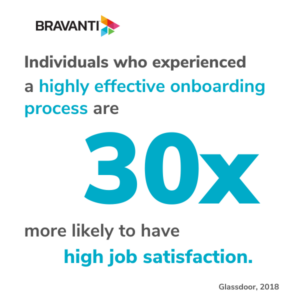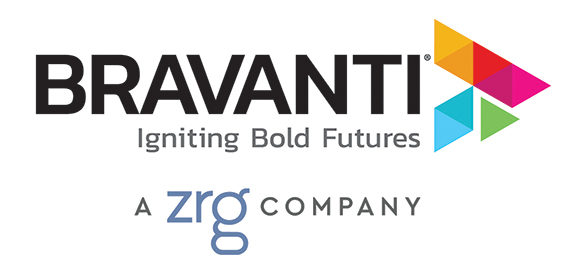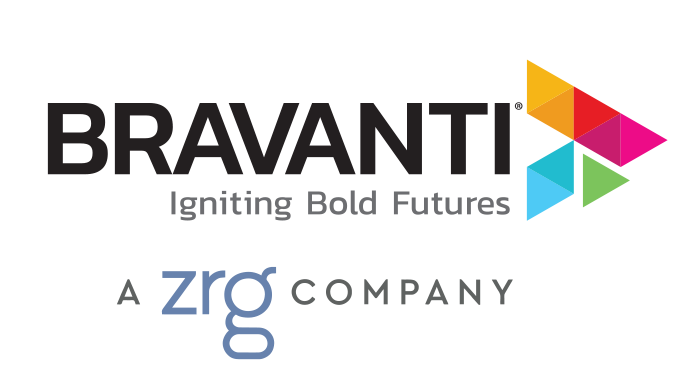As a transitioning leader, your executive onboarding into a new role, new organization, or new team is critical to your success.
A 2018 onboarding study from Glassdoor showed that new hires who experience an effective onboarding process are 91% more likely to feel strong connectedness at work and 89% more likely to feel strongly integrated into their company culture.

The report also revealed that individuals who experienced a highly effective onboarding process are 30x more likely to have high job satisfaction.
Research also shows the converse to be true: that stressful transitions can negatively impact your long-term success.
It’s natural to feel overwhelmed by the leadership transition experience. You may be managing an entirely new, bigger team or taking on a new function where the need for speed or managing change is paramount. And you definitely want to start off on the right foot. This often leads transitioning executives to feel enormous pressure to perform.
In this scenario, it may also feel natural to put off a decision like hiring an executive coach.
But make no mistake: waiting to engage an executive coach is the wrong decision.
Executive coaching is one of the most critical resources that can help accelerate you into a new role and enable your leadership to be a highly valued asset right from the start. At Bravanti, we call executive onboarding “new leader acceleration” – it’s an improved, expedited, and thoughtful process for starting you off on the right foot in your new role. Keep reading to learn what executive onboarding is and eight ways executive coaching can accelerate and optimize your onboarding experience.
What is Executive Onboarding?
Executive onboarding is an internal process of transitioning an executive into a new role within an organization. The leadership transition process is often an expanded, intensive version of a traditional new employee orientation and typically includes:
- Briefings on organizational initiatives, policies, and protocols
- Familiarization with company culture, mission, values
- Introductions to key team members and the organization
- Alignment meetings and goal setting
- Establishing new rhythms and communication lines
- Leadership and/or role-specific training
With intentional planning, a successful executive onboarding can help to accelerate your impact as a new leader while easing the transition for your team and the organization.
How Executive Coaching Supports the Executive Onboarding Process
Given the importance of successful executive onboarding, finding resources to make that happen should be your top priority—and an executive coach is an important component. Here are eight ways executive coaching can accelerate and optimize your executive onboarding.
1. Increase Your Situational Awareness
During your executive onboarding, you’re entering an unknown environment and you need to get the lay of the land. What headwinds or tailwinds will affect your success? What organizational politics might help you (or get in your way), and how do you effectively influence both your team and the broader organization?
These are all critical questions that an executive coach can help you unpack, enabling you to identify and prioritize the most immediate challenges and opportunities.
2. Establish & Deepen Relationships Quickly
Relationships are the crux of any team. Change, whether it’s a new reporting structure or shifts in role responsibilities, can undermine the efficacy of even the strongest teams.
During your executive onboarding, how you handle new or existing relationships will be key to your success. An executive coach can guide both you and your team to understand each other on a deeper level, establish trust, and create the foundation for a high-performing team.
3. Align on Goals & Priorities
Changes in leadership often coincide with changes in goals and priorities. What are the collective hopes for this new beginning? What goals depend on a smooth transition? It’s important for you to understand what the team views as most important, and vice versa, so you can all hit the ground running.
An executive coach can guide you through the process of proactively aligning your own goals and priorities with that of your new team and organization, providing clarity and consensus for all as you move into the new normal.
4. Establish Norms for Communication
Your new team needs a rhythm. Establishing the norms of how you will communicate with and treat each other is vital. This includes having difficult conversations and navigating conflict. How will you communicate in a way that solves problems for the organization and helps you move forward?
An executive coach can provide frameworks and guidance for navigating challenging conversations and conflicts, giving you the tools to overcome common barriers to new leader integration.
5. Solicit Candid Feedback From New Team Members
Try as we might, it can be difficult to solicit unfiltered input from team members, especially in relationships that are just starting out. However, the unspoken concerns and misgivings of your new colleagues can undermine your success and that of the team and potentially the organization.
Through stakeholder feedback interviews, your executive coach can help to get everything out in the open so that concerns can be addressed and issues can be anticipated or resolved.
6. Learn—and Unlearn—Key Leadership Skills & Traits
As leaders, we develop our leadership styles throughout the course of our careers. These leadership styles are an amalgamation of skills and traits we’ve picked up from past leaders, mentors, peers, thought leaders, coaches, and potentially dozens of other sources. Your new role may require you to learn a new set of leadership skills, and it may also require you to offload other skills or traits that no longer serve you, and, importantly, develop your own unique leadership style.
Your executive coach can work with you to identify desired leadership skills and traits and design a personal Development Action Plan to acquire them. Throughout your coaching engagement, your coach will provide guidance as you implement your action plan and develop new leadership behaviors or cognitions.
7. Access to a Trusted Advisor
You want to appear capable and confident in your new role—it’s only natural. The reality is that stepping into a new executive role can be a formidable undertaking, even for the most seasoned leaders. There will be obstacles to your success that you may not know how to overcome—and that’s okay.
With an executive coach as your trusted advisor, you can confidentially work through these challenges, expressing any doubt or hesitations you may have without fear of creating doubt in your abilities. Your executive coach can hold space for you to share your apprehensions while simultaneously equipping you with frameworks and methodologies to move past them.
8. Set the Stage for Inspired Leadership
You’ve just landed in a new executive role, and you share responsibility for driving culture, vision, and values in the organization. This is no easy task, especially amidst change.
Working with an executive coach will help to further develop your executive presence to align with your personal brand and unique style, helping you to express yourself authentically and fully engage those around you.
Start Delivering Value Sooner with an Executive Onboarding Coach
As a transitioning leader, you have the opportunity to leverage the best available resources to take your success into your own hands. And an executive coach can help you do just that.
Interested to learn more about how Bravanti can accelerate your executive onboarding? Book a complimentary consultation today!
Content Related to New Leaders: Engage Your Executive Coach ASAP
What is Executive Coaching? Benefits & Examples
How to Get the Most Out of Coaching
Leadership Coaching: Never More Accessible—or Essential—than Now

